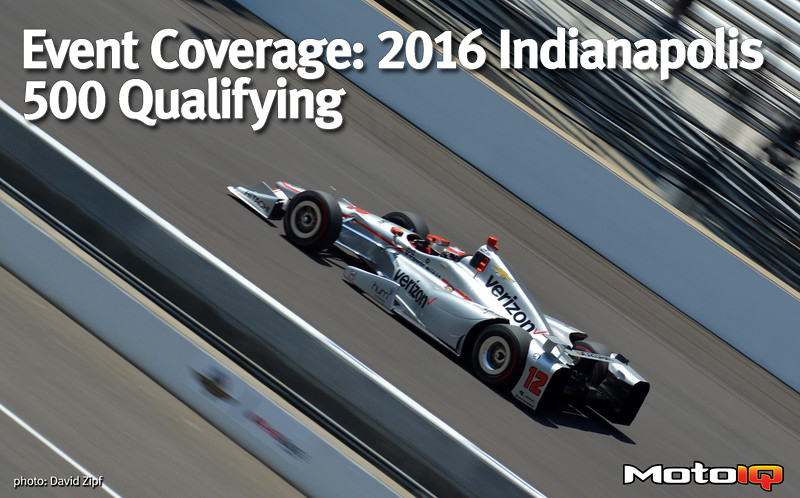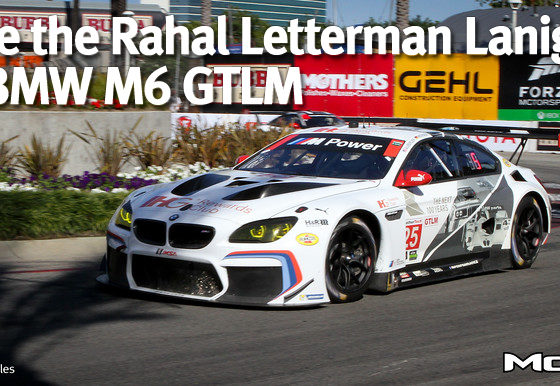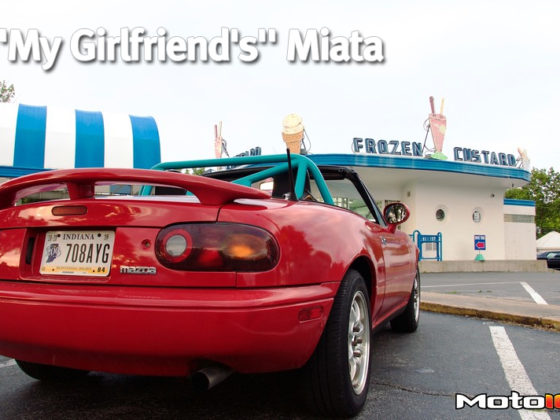Event Coverage: 2016 Indianapolis 500 Qualifying
In case you missed it, the Indianapolis 500 celebrates a milestone this year. While the 100th anniversary of the great race occurred in 2011, the 100th running of the race is happening in 2016. The Indy 500 has been a racing institution for over a century and 2016 is arguably one of its biggest and most important years. To understand why, we need to hop into our DeLoreans and travel back 20 years.
 Geoff Brabbham’s March 85C will work nicely as a reminder of days gone by. 30 years ago CART was growing rapidly with interest from new OEMs, new chassis suppliers, and new teams. The cars were relatively simple, cheap, and sponsors were rampant. The cars were also dangerous, making massive downforce with gigantic underbody tunnels. The tubs were still fragile though, mostly made of aluminum. It was not uncommon for drivers to sustain serious or fatal injuries in this era. This car was on display next to his son Matt Brabham's garage space, who is starting his first ever 500.
Geoff Brabbham’s March 85C will work nicely as a reminder of days gone by. 30 years ago CART was growing rapidly with interest from new OEMs, new chassis suppliers, and new teams. The cars were relatively simple, cheap, and sponsors were rampant. The cars were also dangerous, making massive downforce with gigantic underbody tunnels. The tubs were still fragile though, mostly made of aluminum. It was not uncommon for drivers to sustain serious or fatal injuries in this era. This car was on display next to his son Matt Brabham's garage space, who is starting his first ever 500.1996 was the year of The Split. After half a decade of debate over the direction of open wheel racing, Tony George, then president of IMS and the Indy 500, started his own open wheel racing series, fed up with the dismissal of the CART board of directors. His concerns over the direction of the sport were met with deaf ears (his concerns were valid, though with the success of the sport in those days, it is hard to argue they were merited) and the team owners brushed off the simple track promoter. If you want to read more about The Split and what it did to CART and IndyCar, this series is a great place to start. The TLDR version is this: CART went bankrupt, the IRL became IndyCar, ratings plummeted as NASCAR gained momentum, and the Indy 500, which used to sell out months in advance, could barely muster a quarter million fans. 250,000 is a lot for any stadium, but when the 500 used to pull over 400,000, those numbers are distressing indeed. The Split caused irreparable damage to this race, splitting the loyalties of fans, drivers, teams, and sponsors. Some stayed in the IRL, some went to CART, and worst of all, many went to NASCAR.
 Firestone won the very first Indy 500 in 1911 and they will win the 100th race as well (seeing as they are the only tire supplier in the series right now). Their 500 tire has the names of every single winner printed on them. Firestone stuck with both the IRL and CART (through Bridgestone) even after Goodyear bolted to focus on the growing NASCAR fad.
Firestone won the very first Indy 500 in 1911 and they will win the 100th race as well (seeing as they are the only tire supplier in the series right now). Their 500 tire has the names of every single winner printed on them. Firestone stuck with both the IRL and CART (through Bridgestone) even after Goodyear bolted to focus on the growing NASCAR fad.In 2016, there are signs of life; every single seat sold out in April. Camping is sold out. Parking is sold out. Hotels are sold out. The world’s biggest single day sporting event is just that once more. Pundits argue this is the 500’s last big hurrah: that when race 101 rolls around in a year’s time, the fans will be gone for good. That means the 100th running has to put on a helluva show for those fans to want to return in a year’s time. The festivities were set off a week ago with the Angie’s List Grand Prix of Indianapolis and have continued with practice and into qualifying. Let’s check in on some of those stories and set the stage for what could be the wildest race of 2016.
 For the last two years aerodynamics and horsepower have been the big story of the Indy 500. In 2015, IndyCar allowed engine suppliers Honda and Chevrolet to design and produce their own aero kits for the season. Chevrolet dominated the year, taking most of the wins and every single pole. That dominance has continued in 2016. Chevy has so far gone five for five with poles and wins. More worryingly, Team Penske has scored all of those poles and all but one of those wins.
For the last two years aerodynamics and horsepower have been the big story of the Indy 500. In 2015, IndyCar allowed engine suppliers Honda and Chevrolet to design and produce their own aero kits for the season. Chevrolet dominated the year, taking most of the wins and every single pole. That dominance has continued in 2016. Chevy has so far gone five for five with poles and wins. More worryingly, Team Penske has scored all of those poles and all but one of those wins. Honda has not taken this lying down. While both Barber and the Indy GP showed promise, Honda has come alive in oval trim. The secret is in a new spec of engine which makes far more power than the 2015 Honda motor. All of Honda’s entries are running this engine and Hondas have topped the speed charts through most of practice. The Doom sponsored SPM Honda of Mikhail Aleshin is a Honda powered car. Check out how small the engine is compared to the transaxle. There is actually a large aluminum spacer between the two to fill out the wheelbase of the car. On top of the new engine, Honda also has an updated aero kit that is less pitch sensitive and more efficient.
Honda has not taken this lying down. While both Barber and the Indy GP showed promise, Honda has come alive in oval trim. The secret is in a new spec of engine which makes far more power than the 2015 Honda motor. All of Honda’s entries are running this engine and Hondas have topped the speed charts through most of practice. The Doom sponsored SPM Honda of Mikhail Aleshin is a Honda powered car. Check out how small the engine is compared to the transaxle. There is actually a large aluminum spacer between the two to fill out the wheelbase of the car. On top of the new engine, Honda also has an updated aero kit that is less pitch sensitive and more efficient.



